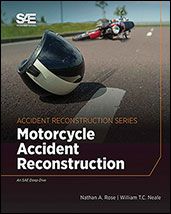Journal Article
Using Multiple Photographs and USGS LiDAR to Improve Photogrammetric Accuracy
2018-04-03
2018-01-0516
The accident reconstruction community relies on photogrammetry for taking measurements from photographs. Camera matching, a close-range photogrammetry method, is a particularly useful tool for locating accident scene evidence after time has passed and the evidence is no longer physically visible. In this method, objects within the accident scene that have remained unchanged are used as a reference for locating evidence that is no longer physically available at the scene such as tire marks, gouge marks, and vehicle points of rest. Roadway lines, edges of pavement, sidewalks, signs, posts, buildings, and other structures are recognizable scene features that if unchanged between the time of accident and time of analysis are beneficial to the photogrammetric process. In instances where these scene features are limited or do not exist, achieving accurate photogrammetric solutions can be challenging.


